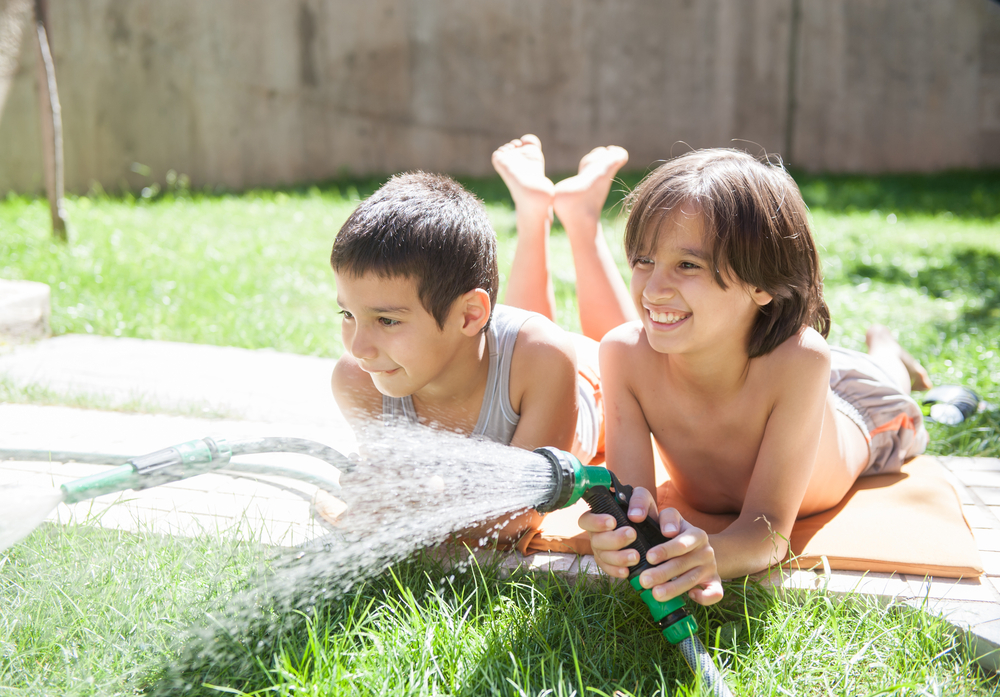Boost STEM Skills With These Simple Water Activities
- July 20, 2021
- By KIDS DISCOVER
Add a splash of fun to kids’ summer learning experiences with some fun water activities! Here are some simple ways they can explore science, engineering, and math concepts while developing creative and critical thinking skills. These activities are easy to set up and can be done with low cost, everyday materials. They allow kids to be playful as they discover, investigate, and create on their own. (You will want them to do these outside or in a space where it is OK to spill some water!)

Before these water activities, encourage the kids to make predictions about what they think will happen and why. Afterwards, ask them to compare what actually happened to their original ideas. Have them reflect on what they expected, what surprised them, and what they might want to do next (or over again). They can record their thoughts and experiences in a journal, sketchbook or video.
1. Make your own lava lamp: Explore density by filling a plastic water bottle with 3 parts water and 1 part vegetable oil. Notice that the liquids do not mix and the oil rises to the top. This is because the oil is lighter, or less dense, than the water. Now add a few drops of food coloring to the bottle (and glitter if you would like). To make the “lava” pour some salt into the bottle. Since the salt is heavier it will sink to the bottom (along with some oil that attaches to it). Enjoy watching the “blobs” fall and add more salt to see it happen again. To give it a “lava lamp” effect, shine a flashlight behind the bottle.
Go further: Try substituting pieces of Alka Seltzer tablets in place of the salt and see if the results are different. To explore more with density get another bottle or jar and pour some different types of liquids, such as baby oil, honey, rubbing alcohol, and dish detergent in with water and oil. What happens? If you add different colors of food coloring can you see the layers even better? Which liquids are more/less dense than others?
2. Create a colorful water xylophone: Make music using small jars of water and a soft mallet or xylophone striker. Use measuring cups to fill each jar with a different amount of water. Line the jars up in order from least to greatest. Add a different color food coloring to each one. If you want to make it look like a rainbow, start with red food coloring in the jar with the least water in it, then add red and yellow in the second jar to make orange, yellow in the third jar, and so on with green, blue and purple, mixing colors as desired. Then, when you are ready to play sounds carefully tap the glass with the mallet. Can you play a familiar tune? Or do you want to create your own music? (Here’s a great visual example from Mama Papa Bubba.)
Go further: When you are done making music, what else can you do with the jars of colored water? Maybe you want to pour colored water into another container to see colors mix. Or perhaps you would like to dip a paper towel or coffee filter in the colored water to create designs and experiment with chromatography.
3. Uncover secret drawings: Try the crayon resist technique to create and reveal what is hidden on a sheet of paper. Use a white crayon to write or draw something secret (it can be a picture, words, numbers, or other symbols) on white paper. Then, to show what is there, brush colored water or watercolor paint over the paper. (Check out this example from homeschool mom Jimmi.)
Go further: What else can you do with this technique? Can you send and receive secret messages with a friend? How about to practice spelling or math problems? Or to create an interesting picture? Do you want to try different colors of crayons, paper, and watercolor to see what would happen?
4. Construct a water wall: Discover how you can channel water by building a system for water to move through. First, gather some items that water can flow through, such as plastic funnels, pool noodles, PVC pipes, and old bath toys. You can also cut the bottoms out of used plastic bottles and jugs. Then, arrange and attach them to a fence, pegboard, or other vertical surface so that water pours down through all of the items in succession. You can use zip ties, twist ties, or thin wire. Collect the water at the bottom so you can run it through your water wall over again.
Go further: Can you improve your design? Can you think of any elements that you can add? What would happen if you change the angle of any of the pieces in the system?
What water activities have you tried with kids? Share your ideas and pictures on Twitter with @kscharaldi and @KIDS_DISCOVER!